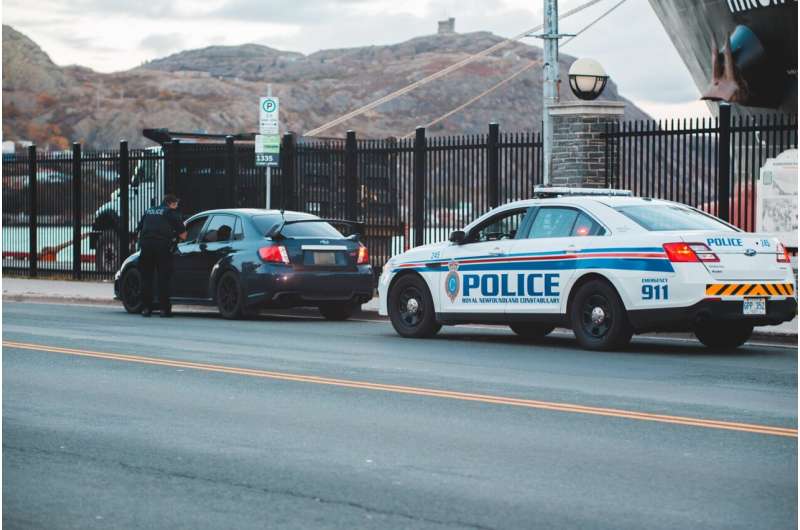This article has been reviewed according to Science X's editorial process and policies. Editors have highlighted the following attributes while ensuring the content's credibility:
fact-checked
peer-reviewed publication
trusted source
proofread
Not just an urban problem: New study reports higher rate of shootings by police across suburbs and rural areas

Media coverage of shootings by police typically involve urban incidents, giving the impression that the issue is unique to cities. However, national data built from the Gun Violence Archive tells a different story, showing a higher rate of shootings by police in rural and suburban areas than in cities during 2015-2020. A new study in the American Journal of Preventive Medicine reports on the first nationwide, descriptive analysis of where, how often, and under what circumstances individuals in the US are injured or killed in shootings by police in urban, suburban and rural areas.
Lead investigator Julie A. Ward, Ph.D., MN, RN, Assistant Professor of Medicine, Health, and Society and Public Policy Studies at Vanderbilt University, explains the underlying rationale for the study: "As a public health nurse, I have seen how physically and emotionally impactful fatal and nonfatal shootings can be. Experiences in times of crisis and in encounters with police carry a lot of weight in shaping personal and community feelings of safety, but the federal government doesn't require policing agencies to report when officers shoot and injure someone.
"Before our study, existing research on shootings by police in nonurban areas was very limited. Our systematic examination of the circumstances of incidents across the urban to rural continuum brings to light an overlooked population health concern affecting how people experience public safety across large regions of the US."
The study found that over the six years of data analyzed, 45% of shootings by police occurred in rural ZIP codes; 22% happened in suburban ZIP codes.
The findings also show that racial disparities exist across the urban-rural continuum. Black and Native American residents of urban areas were most disproportionately affected, but injury rates were also high among suburban Black residents, rural Black residents, and rural Native American residents. Nationally, these groups' per capita rates of injury from shootings by police were three to five times higher than rates of injury among white residents living in the same rurality designation. Rates of injury to Hispanic residents of urban, suburban, and rural areas were nearly two times higher than non-Hispanic white residents' rates of injury.
Dr. Ward notes, "This is an equity issue. Public safety should not just be a euphemism for policing. All residents should have access to services to help them stay safe and healthy, including in times of crisis."
The most common types of policing encounters associated with the shootings were traffic stops, domestic violence events, "shots fired" reports, attempts to serve warrants or complete arrests, and incidents involving behavioral health needs. Less than half of shootings in rural zip codes involved shots fired only by local police. Fifty-six percent of these shootings in rural areas involved shots fired by sheriffs' offices, state police, other agencies, or multiple policing agencies.
Dr. Ward adds, "We often use 'police' as shorthand for agencies that engage in law enforcement and other policing activities. But this research makes it clear that if we only focus on improving accountability among local police departments, we will miss a big part of the picture experienced by nonurban residents. This suggests potential for wide-reaching prevention nationally if local and national responses include nonurban jurisdictions and nonurban police and sheriffs' departments."
She continues, "Over the past several years, we've seen huge growth in the national dialog around police use of force, police accountability systems, and alternative responses. A number of communities have introduced new dispatch services, dedicated behavioral health response teams, co-responder models, and other innovative approaches. To have a broad impact nationally, these potential improvements need to not only focus on urban areas or local police departments."
More information: Julie A. Ward et al, Characteristics of Injurious Shootings by Police Along the Urban–Rural Continuum, American Journal of Preventive Medicine (2024). DOI: 10.1016/j.amepre.2024.05.021



















